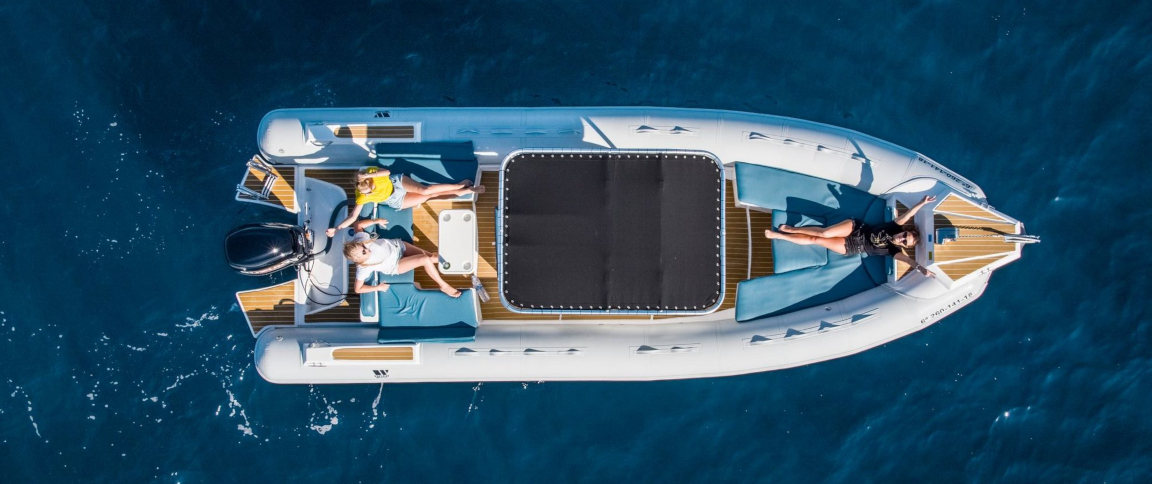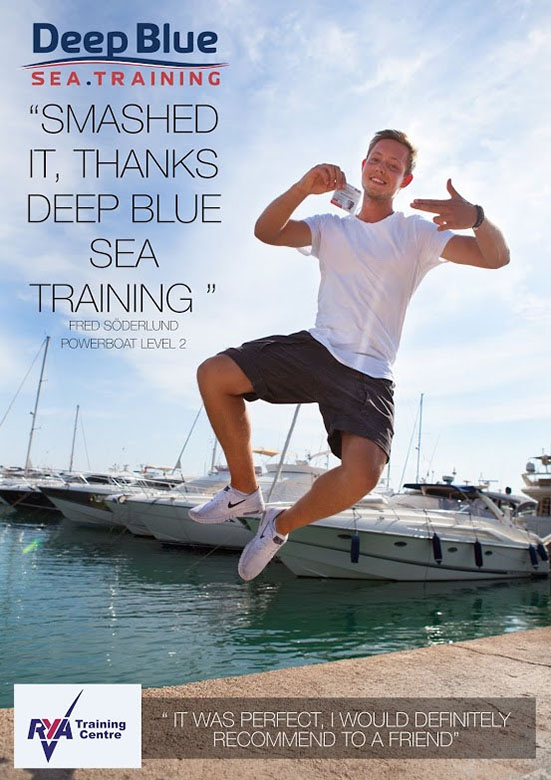
General characteristics
RIBs are commonly four to nine metres (13 to 28 ft) long, although they can range in length between 2.5 and 18 metres (7.5 and 55 ft). A RIB is often propelled by one or more outboard motors or an inboard motor turning a water jet or stern drive. Generally the power of the motors is in the range of 5 to 300 horsepower (4 to 224 kW).
RIBs are used as rescue craft, safety boats for sailing, dive boats or tenders for larger boats and ships. Their shallow draught, high maneuverability, speed and relative immunity to damage in low-speed collisions are advantages in these applications.
RIBs up to about seven metres in length can be towed on trailers on the road; this, coupled with their other properties, is making them increasingly attractive as leisure craft.
Performance
RIBs are designed with hydroplaning hulls. Due to their low weight, RIBs often outperform some types of similarly sized and powered boats.
RIBs can also generally cope better with rougher seas, although this may be partially due to an increased level of confidence in knowing that a RIB is hard to sink, and better absorption of heavy loads by the flexible tubes, which therefore make heavy seas less unpleasant.
The maximum speed of the RIB depends on its gross weight, power, length and profile of hull, and sea conditions. A typical seaborne 6-metre (19 ft 8 in) RIB, with six passengers, 110 horsepower (82 kW) engines, in Beaufort force 2 is very likely to have a top speed of around 30 knots (56 km/h). High-Performance RIBs may operate with a speed between 40 and 70 knots (74 and 130 km/h), depending on the size and weight.
Construction
Hull - The hull is made of steel, wood, aluminium, or more commonly, a combination of wood for the structure and glass-reinforced plastic (GRP) composite for the shaped and smooth surface. Some manufacturers also weave Kevlar into the GRP sheets for extra strength. The hull of a RIB is shaped to increase the performance of the boat in the water by optimising its hydroplaning characteristics. "Deep-V" hulls cut through waves easily but require greater engine power to start planing than "shallow-V" hulls, which plane at lower speed but with a more uncomfortable ride. As with the design of most boat hulls they represent a compromise of different design characteristics. Modern "all round" RIB hulls combine a deep v hull at the bow which flattens out to present a broad planing pad. This is a flat area on the rear of the hull designed to allow the boat to have a stable surface to plane on.
Tubes - The tubes are usually constructed in separate sections to reduce the effect of a puncture, each with a valve to add or remove air. Larger boats (7m+) have 6 or more chambers with a valve for each chamber. The more chambers a boat has the more redundancy the boat is considered to have. This is because if only one chamber is damaged then the impact the damage has on the boat is much less. Dark tubes often have pressure relief valves as the air inside them expands when exposed to sunlight. This prevents the tubes bursting from overpressure. Common materials for the tubes are Hypalon and uPVC (Polyvinyl chloride), though some manufacturers use PU (Polyurethane)
Hypalon - Tubes made of Hypalon are easy to manufacture and can be repaired with simple puncture repair kits. Hypalon is not airtight and so must be combined with Neoprene when used to build tubes. Tubes made with Hypalon and Neoprene layers can last at least 5 years. Hypalon is probably the most popular material used for the construction of RIBs manufactured in the UK.
PVC (Polyvinyl chloride) - As a material for building tubes, polyvinyl chloride (PVC) has the disadvantage of lacking flexibility. To make it supple, an additive is used with the polymer. This additive vaporizes as the material ages, making the PVC brittle and allowing it to crack. A PVC tube is the cheapest option and can last approximately 10–15 years
PU (Polyurethane) - Tubes made of polyurethane (PU) are difficult to manufacture and are consequently not often used for RHIB construction. PU has an advantage of being very tough, it can be made knife-proof or bulletproof. Earlier PU had a disadvantage of aging quickly but newer types are much more resistant to degradation when exposed to ultraviolet-light. A high-quality PU-made tube lasts over 20 years. PU tubes are often to be found on commercial RIBs, in applications where strength and durability are needed. Replacing the tubes when they wear out usually costs one third as much as the complete RIB.
Wheelhouse/cabins
Larger RIBs can have hard-tops or wheelhouses made of GRP or aluminium. Wheelhouses offer protection from the elements to both the crew and passengers – and can also protect equipment such as suspension seats and navigation equipment. Some RIB manufacturers, particularly those popular in Ireland and the West Coast of Scotland provide optional canopies which form fabric and perspex wheelhouses but can be easily removed in good weather. Increasingly, RIBs are becoming available with small cabins (usually with accommodation for two people and in some cases sea toilets or chemical toilets), widening the application of RIBs as cruising craft.





